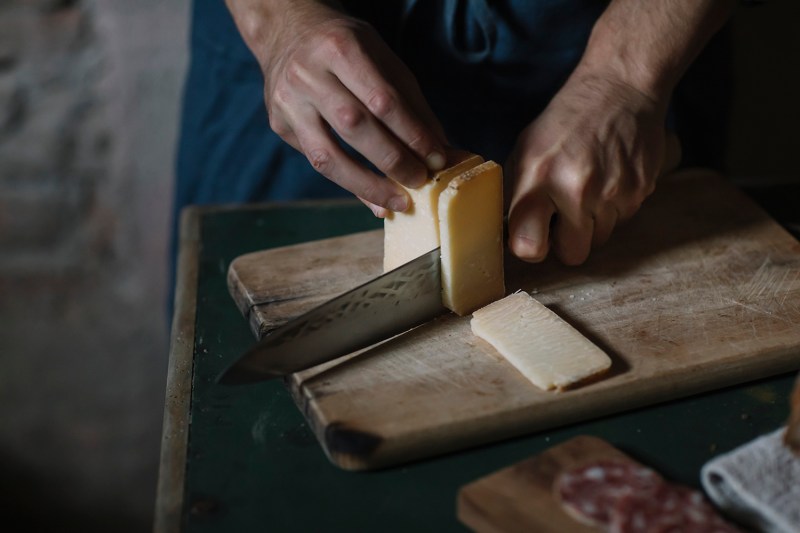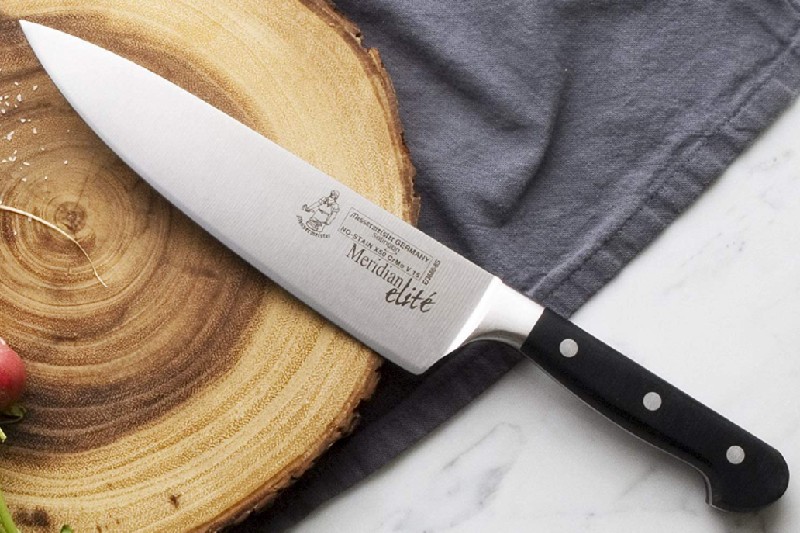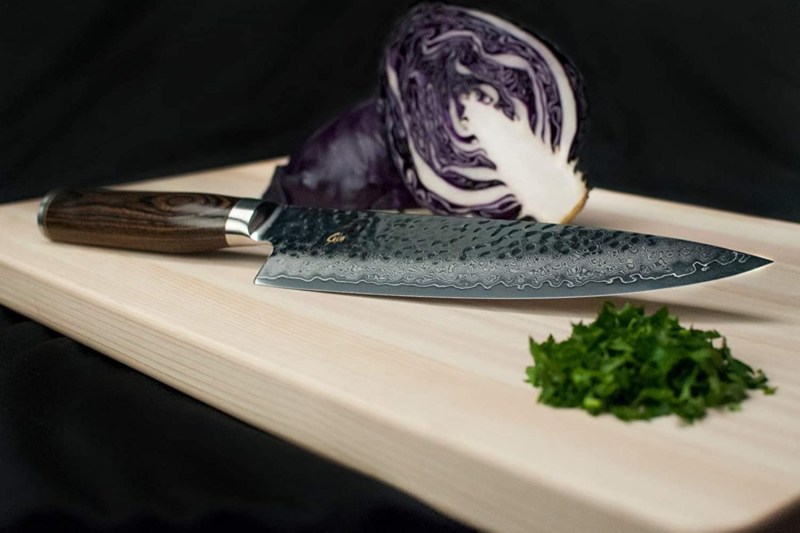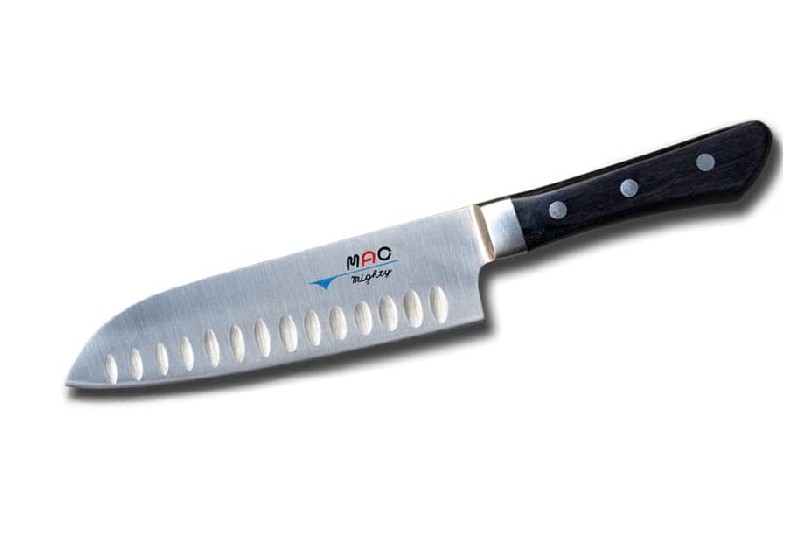
You don’t have to have the knowledge of a chef to understand that there’s a wide range of knives that are designed for specific tasks in the kitchen. What you might need a chef’s knowledge for is knowing what knife does what and which brands are the best. However, with so many different knife producers out there using different types of steel and production methods, many chefs don’t even know the absolute best ones.
Whether you’re a professional or home chef, you’re going to need a knife kit that can slice, dice, de-bone, filet, mince, chop, and whatever else your recipe book can throw at you. To better understand what kinds of knives you need, you can check out our guide to types of kitchen knives and their uses.
Another way to select your knives is to think about the food you cook most often. Do you butcher a lot of meat and fish? Slice a lot of bread? Peel and chop fruits and veggies? To help, we’ve broken down our top picks by the kitchen tasks they’re most suited for.
Best For Any Job: Chef’s Knife
The chef’s knife is the ultimate knife that is designed to perform any task. An experienced chef with excellent knife skills can prep an entire eight-course meal using only a chef’s knife. However, an experienced chef also knows that a chef’s knife isn’t the best knife for every job. That’s why they go to the trouble of building a quality knife kit to begin with, and a kit without a chef’s knife is incomplete.
Since we’ve already gone into detail about chef’s knives (linked above), we won’t go into too much detail. Below are our three favorite chef’s knives based on style.
Best German Steel Chef’s Knife: Messermeister Meridian Elité Stealth Chef’s Knife

Although less known than its more popular competitors Zwilling J.A. Henckels and Wüsthof, Messermeister has stayed true to hand-forging their knives while the others have turned to mass-production methods involving machinery. The German 1.4116 stainless carbon alloy blade resists corrosion and has a 15-degree Elite edge formed by hand stropping on a cloth wheel. This type of edge is common for Japanese chef’s knives, which range from 10 to 15 degrees normally, but not for Germain steel. The Stealth version is 10% lighter than the standard Messermeister Meridian Elité model, making a perfect knife for performance and precision cuts.
Best Japanese Chef’s Knife Shun Premier Chef’s Knife

The word shun refers to a time when an ingredient is at its most flavorful, and a Shun knife is a chef’s knife at its most beautiful. The Shun Premier Chef’s knife combines beauty and performance with its hand-hammered, lightweight, razor-sharp blade and walnut-colored PakkaWood handle. The handle’s endcap brass ring is a feature that not all Japanese knives possess and provides added weight and balance. Shun is a preferred brand for professional and home chefs alike for a good reason.
Best Santoku Chef’s Knife: Mac Knife MSK-65 Professional Hollow Edge 6.5-Inch Santoku Knife

Santoku chef’s knives originated in Japan, so why not turn to a Japanese knifemaker for the best of the best? Mac knives are among the highest in-demand Japanese knives for their quality and dependability. There are slight differences between a classic chef’s knife and a santoku that can make them preferable based on cutting style and task. A santoku blade has a less defined tip and is less curved than a classic chef’s knife, which uses a rocking motion to slice when used correctly. The santoku lends itself to more of an up and down chopping style, which can actually do the job faster if you’re skilled with a knife. The blade’s dimpled (Granton) edge allows the product to slide off more easily so that it doesn’t get in the way of your lighting-fast cuts. If you prefer this method of chopping and slicing, the Mac MSK-65 santoku will be your new best friend in the kitchen.
Best Knife For Fish
Dalstrong 10.5-Inch Gladiator Series Yanagiba Sushi and Slicing Knife

Dalstrong is an example of a knife brand that can leave knife traditionalists’ heads spinning. They are a knife manufacturer out of China that uses both German and Japanese steel and alternates it between styles. This 10.5-Inch Gladiator Series Yanagiba Sushi and Slicing Knife is a Japanese-style knife that uses ThyssenKrupp German high carbon steel. If you cringed at the word China, don’t. Though a lot of shotty merchandise can come from China, Dalstrong doesn’t fall in this category. It’s a highly rated brand that’s preferred by home and professional chefs alike. When it comes to breaking down fish, you need a very precise and extremely sharp blade. This knife delivers in both of those categories. Whether you’re skinning a side of salmon or slicing up tuna for sashimi, this knife will let you do the job in one stroke.
Best Knife For Slicing Meat
Carving Knife: Victorinox 12 Inch Pro Slicing Knife

This Swiss-made knife from Victorinox, the same people who brought you the Swiss army knife, proves that the Germans and Japanese aren’t the only ones that can make an excellent knife. If you’re trying to cut deli meat by hand, or the holiday rib roast, a carving knife will allow for precision slices at your desired thickness. The carving knife’s extra-long (and extra-sharp) blade makes the knife do all the heavy lifting. Meaning you’re not hacking and sawing away at the meat. Like the santoku, most carving knives have a Granton edge to keep the meat from sticking to the blade. Meat carving is typically a daily kitchen task, including in professional kitchens. So it’s not necessary to drop a ton of money into one. This 12-inch carving knife from Victorinox is a trusted tool among chefs.
Best Knife For Butchering Meat
Butcher’s Knife: Wüsthof Classic 8-Inch Butcher’s Knife

Having an excellent butcher’s knife in your arsenal will not only aid you in breaking down a whole hog in under an hour, but it will also scare the bejeezus out of any home intruders. This hyper-sharp, super-balanced butchers knife from Wüsthof will let you perform precision meat cuts and brut strength bone-slicing blows.
Read more: Best Steak Cuts
Best Knife For Removing Bones
Boning Knife: Zwilling J.A. Henckels 5.5-Inch Flexible Boning Knife

An excellent boning knife has the perfect combination of strength and flexibility to get in the areas a butcher knife can’t reach to preserve meat and maintain bones for cuts like pork chops. This Zwilling J.A. Henckels Flexible Boning knife has perfected that combination.
Best Knife For Slicing Vegetables:
Nakiri Knife: Dalstrong 6-inch Nakiri Vegetable Knife (Phantom Series)

Nakiri knives is a Japanese vegetable slicing knife that’s like if a santoku and a meat cleaver had a baby. Its ultra-sharp and super-straight edge let you slice through an onion like butter. The Dalstrong Phantom Series Nakiri knife helps you get the job done in style with its beautiful yet ergonomically designed Pakkawood handle. If you consider yourself a veggie eater and love efficiency, this is an essential knife to add to your collection.
Best Knife For Cutting Through Bone
Mueller 7-inch Meat Cleaver Knife

With this 7-inch meat cleaver from Mueller, you don’t need to worry about going around the bone; you can go straight through it. Meat cleavers are more compact and typically heavier than butcher’s knives, so they can easily cut through bone. Just make sure your cutting board is as heavy-duty as this knife.
Best Knife For Slicing Bread
Henkles Classic 7-Inch Bread Knife
If you’ve ever tried to slice through a loaf of homemade bread you made with your brand new bread machine with anything other than a serrated bread knife, you probably know how crucial they are. That’s because even if another knife has a sharp edge, the force you have to put on the loaf squishes the loaf leaving you with less than impressive sandwiches. Bread knives have an extremely sharp serrated edge designed for sawing through bread like butter and maintaining the loaf’s shape. This Henkels Classic 7-Inch Bread knife is an essential knife to own if you also own.
Best Knife For Peeling
Victorinox 4-Inch Swiss Classic Paring Knife with Straight Blade
Paring knives are small but mighty and a crucial knife to have in your knife kit. Paring knives can peel, score, core, de-seed, and de-stem any fruit or veggie. They’re the common-sense option when dealing with smaller awkwardly shaped foods. But, if you don’t value your fingers, go ahead and use a chef’s knife. A pro tip for paring knives is the cheaper ones are almost always a better option than an expensive one for two main reasons. The first is the paring knife is always the first to go missing in the kitchen. Second, sharpening a paring knife is a tedious and annoying task. It’s almost worth it to buy another cheap knife than to experience sharpening or replacing an expensive one.
What’s the Difference Between Japanese and German Steel Knives?
Although one type of knife is necessarily “better” than the other, there are some primary differences between the two styles of knives. Those differences mainly lie in the knife’s composition and design. As knife innovation continues, you’ll find hybrid knife styles that mix and match features of traditional styles.
Characteristics of German Steel Knives
German steel chef’s knives are said to be more of all-around kitchen workhorses rather than precision slicing tools like their Japanese counterparts.
Thicker and Heavier
German knives are thicker, sturdier blades providing more weight and balance thanks to their full-tang design.
Softer Steel with More Alloys
German steel knives are made up of softer steel relative to Japanese knives. It may seem counterintuitive, but softer steel makes for a more durable knife because hard steel is brittle and can chip. Most German steel knives have higher levels of chromium and similar alloys that make them more resistant to corrosion.
Full Tang
The tang is the portion of the knife that extends into the handle. Most German steel knives consist of a blade and a full tang, which is then attached to the handle with rivets. The full tang is what provides weight and balance.
A Bolster
Bolsters are the thick portion of steel between the blade and tang. They act as a barrier between your hand and the blade. Full tang German steel knives always have a bolster, whether full or partial. The bolster shows you the original thickness of the steel before it was forged. This portion of the knife can sometimes get in the way of sharpening your blade.
Contoured Handles
The handles of German knives are crafted with comfort in mind and can range from synthetic materials to wood which is attached to the tang with rivets.
Characteristics of Japanese Steel Knives
Japanese steel knives are known for their extreme sharpness and precision cuts. Japanese blade designs can vary widely, however, a common characteristic is a straighter edge than the classically curved edges of German steel.
Lightweight and Thinner
If you handle a Japanese knife after a German knife you’ll be shocked how light it feels. It’s essentially like holding a giant razor blade. The knife is also noticeably thinner than German steel knives.
Harder Steel
The steel used in Japanese is much purer, consisting of fewer alloys than German steel, making the steel much harder. Hard steel allows for the thin, ultra-sharp blade. However, this makes the knife more brittle and increases the likelihood of chipping if dropped. Also, the absence of alloys can also leave Japanese knives more vulnerable to corrosion.
Half Tang
Most classic Japanese knives have half tangs that are attached to a wood or synthetic handle. Japanese steel knives with full tangs are usually some sort of German/Japanese hybrid.
Creative Handles
Although most are, not all handles on Japanese knives are designed for comfort. Japanese knifemakers often take the route of form over function and use a variety of materials with creative designs for handles. Japanese knife handles can vary from synthetic material to luxury woods like mahogany or white-bark magnolia.
Are Expensive Knives Better Than Cheap Knives?
The answer to this question is, it depends on what your definition of cheap is. In terms of chef’s knives, you can find a great knife for under $100, but if it starts dropping below $20 we’d question its quality. Larger knife manufacturers are able to now mass-produce knifes using machines and technology, allowing for a high-quality yet less expensive knife. A hand-forged knife is always going to be more expensive to cover the labor costs involved. There’s a level of love and devotion that goes into a hand-forged knife that many people prefer, and some say they can actually feel the difference. Nevertheless, a hand-forged and machine-forged knife will both get the job done.





